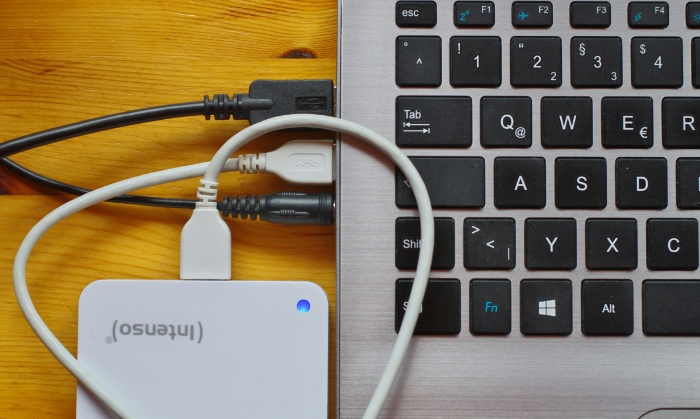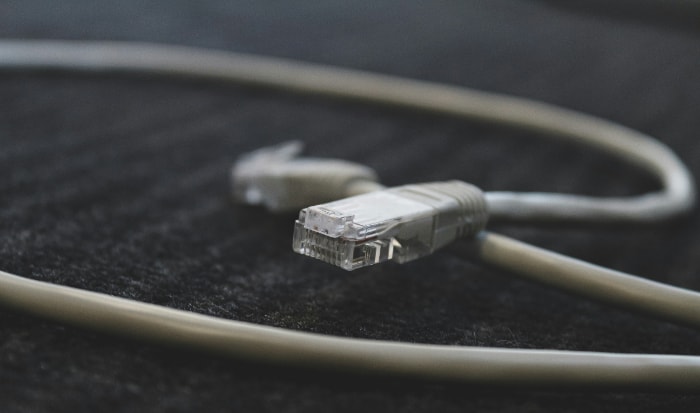What Are Data Cables? Veins of Modern Tech

Living in a digital world means constantly connecting with others, accessing information, and enjoying entertainment through various devices. Behind the scenes, data cables serve as the vital pathways that make these interactions possible.
These cables are more than just accessories; they are the lifelines that power our devices, transfer our data, and essentially keep us plugged into the digital age. From charging smartphones and transferring files to setting up networks and streaming high-definition videos, the role of data cables in our daily lives is undeniable.
What Are Data Cables
Data cables are physical connectors that facilitate the transfer of data between devices. They can carry both power and data, enabling devices to communicate with each other and with the internet.
These cables are crucial for the operation of computers, smartphones, gaming consoles, and many other electronic devices.
The Role of Data Cables in Data Transfer and Power Supply
Data cables are not only responsible for transferring information but also for supplying power to devices. For instance, USB cables can charge your smartphone while also syncing data with your computer.
Similarly, HDMI cables provide both audio and video transmission from your gaming console to your television. The dual function of these cables makes them indispensable in the modern digital era.
The Importance of Data Cables
Without data cables, the digital experience as we know it would not be possible. They are the backbone of network connectivity, ensuring that data flows seamlessly from one point to another.
Whether it's for professional use, such as setting up a secure and efficient office network, or for personal use, like streaming movies online, data cables make it all happen.
Types of Data Cables
In the realm of digital connectivity, data cables are the unsung linchpins that ensure our devices communicate effectively. From connecting to the internet to transferring files between devices, the right type of data cable can significantly impact the efficiency and speed of these tasks.
USB Cables
USB cables are perhaps the most widely recognized form of data cables. They come in various types, including USB-A, USB-B, USB-C, and micro-USB, each serving different purposes.
USB-C, the latest iteration, is known for its reversible connector design and the ability to carry both data and power over a single cable. It's used for everything from charging smartphones and laptops to transferring data at high speeds.
Ethernet Cables
When it comes to establishing a wired internet connection, Ethernet cables are the go-to choice. They connect devices to local networks and the internet, offering faster and more reliable connections than wireless setups.
There are different categories, such as Cat5e, Cat6, and Cat7, each supporting varying speeds and bandwidths. Ethernet cables are crucial for setups requiring stability and high-speed internet, like gaming or streaming in high definition.
HDMI Cables
HDMI cables are all about audio and video transmission, providing a high-quality digital connection between devices like TVs, gaming consoles, and computers. They carry uncompressed video data and compressed or uncompressed digital audio data.
HDMI cables have become standard for home entertainment systems, allowing for the transfer of HD and 4K video signals alongside multi-channel audio over a single cable.
Fiber Optic Cables
For the fastest internet speeds available, fiber optic cables are unmatched. These cables use light to transmit data, allowing for speeds that can exceed those of traditional copper cables.
They are most commonly used in internet backbone connections due to their ability to handle vast amounts of data over long distances without losing signal quality. In residential areas, fiber optic cables are increasingly becoming the preferred choice for high-speed internet.
Factors Influencing Data Cable Performance
The performance of data cables is crucial for efficient digital communication and connectivity. However, several factors can influence how well a data cable performs, affecting everything from speed to signal quality.
Cable Length
The length of a data cable can significantly impact its performance. Generally, the longer the cable, the greater the potential for signal degradation.
This is particularly true for types of cables that are susceptible to resistance and interference over long distances, such as Ethernet and USB cables. Choosing the right length for your needs can help maintain optimal signal quality and data transfer speeds.
Material Quality
The materials used in the construction of a data cable also play a critical role in its performance. High-quality cables are typically made with better conductive materials, such as pure copper or gold-plated connectors, which provide lower resistance and better signal integrity.
Additionally, the quality of the insulation and shielding can affect a cable's ability to prevent interference from external sources.
Shielding
Shielding is a protective layer in data cables that helps prevent electromagnetic interference (EMI) from affecting the data being transmitted. Cables can have different types of shielding, including foil and braided, each offering varying levels of protection.
Effective shielding is particularly important in environments with high levels of electromagnetic noise, ensuring that data transfers remain uninterrupted and reliable.
Connector Quality
The connectors at either end of a data cable are critical for establishing a secure and effective connection between devices. Poorly made connectors can lead to loose connections, corrosion, and signal loss.
High-quality connectors, often gold-plated, provide better conductivity and resistance to corrosion, ensuring a stable connection over time.
Environmental Factors
Finally, environmental factors such as temperature, humidity, and physical stress can affect the performance of data cables. Extreme temperatures can degrade the materials used in cables, while humidity can lead to corrosion of connectors and cables.
Physical stress, such as bending or twisting, can damage the internal structure of the cable, leading to reduced performance or failure.
Choosing the Right Data Cable

Selecting the appropriate data cable for your needs is more than just picking up the first cable you come across. The right cable can enhance your device's performance, ensure faster data transfer rates, and even extend the lifespan of your devices by providing adequate power supply.
Compatibility
The first step in choosing a data cable is to ensure compatibility with your devices. Different devices require different types of connectors and cable standards.
For example, newer smartphones may use USB-C cables, while older models might require micro-USB. Similarly, for video and audio equipment, ensuring your HDMI cable can handle the resolution and refresh rate you need is crucial.
Always check your device's specifications to determine the right type of cable needed.
Speed Requirements
Data transfer speed is a critical factor, especially for tasks that require moving large files or streaming high-definition content. USB cables, Ethernet cables, and HDMI cables all have different versions that support varying speeds.
For instance, a USB 3.0 cable can transfer data much faster than a USB 2.0 cable. Similarly, Cat6 Ethernet cables are faster and more reliable for internet connections than their Cat5e counterparts.
Consider the speed requirements of your activities to select the most suitable cable.
Durability and Quality
The build quality of a data cable can affect both its performance and longevity. High-quality cables are typically more durable and resistant to wear and tear.
Look for cables with robust construction, such as braided cables or those with reinforced stress points. These features can prevent common issues like fraying or breaking, especially if you frequently plug and unplug your devices.
Length and Flexibility
The required length of your data cable depends on how you intend to use it. Longer cables offer more flexibility in terms of device placement but can suffer from signal degradation over distances, as mentioned earlier.
Conversely, shorter cables can provide a stronger signal but limit your setup options. Assess your space and setup to decide the most appropriate cable length, keeping in mind the balance between convenience and performance.
Environmental Considerations
Lastly, consider the environment in which the cable will be used. For harsh or outdoor environments, you may need cables designed to withstand extreme conditions, such as waterproof or UV-resistant cables.
In office or home environments, cable aesthetics or color might be important to match your space’s decor or to help with cable management and identification.
Maintenance and Care Tips for Data Cables
Proper maintenance and care of data cables can significantly extend their lifespan and ensure they continue to perform optimally. Regular attention to the condition and storage of your cables can prevent common issues such as signal loss, physical damage, and connectivity problems.
Regular Inspection
Frequent checks for signs of wear and tear can help catch potential problems before they escalate. Look for frayed edges, exposed wires, or bends at the cable ends, as these can indicate physical damage that might affect performance.
Inspecting connectors for dust, dirt, or signs of corrosion is also crucial, as these can interfere with the quality of the connection.
Proper Storage
Storing data cables properly can prevent damage and extend their useful life. Avoid tangling cables, as this can cause stress and strain on the wires inside.
Use Velcro ties or cable organizers to keep cables neat and untangled. When not in use, store cables in a cool, dry place to avoid environmental damage from humidity or temperature extremes.
Avoiding Stress and Strain
Cables can suffer from stress and strain when bent too sharply or when too much tension is applied. Ensure there's enough slack to prevent excessive pulling, especially at the connectors.
Avoid bending cables at severe angles, as this can damage the internal wiring over time.
Cleaning Connectors
Keeping the connectors clean is essential for maintaining good contact and preventing connectivity issues. Use a dry, soft brush or compressed air to remove dust and debris from connectors.
For more stubborn dirt, a cotton swab lightly dampened with isopropyl alcohol can help clean the contacts without causing damage.
Using High-Quality Accessories
Investing in high-quality cable management accessories can also help maintain your data cables. Cable sleeves, routing clips, and quality cable ties can protect cables from physical damage and help organize them to prevent tangling and stress.
Additionally, using quality power strips and surge protectors can prevent damage from power surges.
Conclusion
Data cables play a crucial role in keeping us connected and powered in our digital lives, from charging devices and transferring data to ensuring we have reliable internet connections. Through exploring the different types of data cables, like USB, Ethernet, HDMI, and fiber optic, we gain insight into how each serves distinct purposes in our daily technology use.
Recognizing factors that affect cable performance, such as length, material quality, and environmental conditions, allows us to troubleshoot and optimize our setups for the best results. Moreover, by adopting proper maintenance and care practices, we can extend the life of our cables, ensuring they continue to perform at their best.


